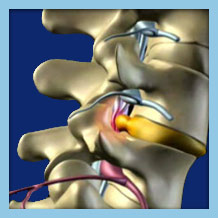

How Do I Know if I Have Foraminal Stenosis?
Symptoms of foraminal stenosis include numbness and tingling felt in the affected area, and into the arms or legs, depending on where the stenosis occurred. If the stenosis is in the lower back the symptoms will be felt in the lower extremities, whereas cervical stenosis or stenosis in the neck will affect the arms, shoulder, and hands. As foraminal stenosis progresses the symptoms will worsen, and could eventually lead to muscular weakness and loss of sensation.
Do you have any of these symptoms and think you may be suffering from foraminal stenosis? We have a quick and easy tool to help gather some information from you to help us determine what your problem is and get you on the road to recovery.
What Foraminal Stenosis Treatment is Right for Me?
Seeking another expert’s opinion is a good start in correcting a failed back or neck surgery. Often the initial diagnosis may be incorrect and a condition that was never actually there was treated without need. Only once conservative treatments have been exhausted should surgery be considered.
OLSS provides a wide range of treatment options and because our doctors are the most experienced and best trained in treating failed back or neck surgery syndrome we are able to perform many advanced treatments other practices are unable to offer.
The real question is: What treatment is best to treat your failed surgery syndrome? Use our Treatment Match tool to quickly get started in finding the right treatment for you.
